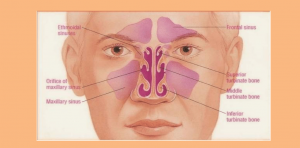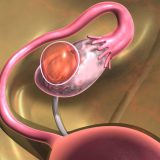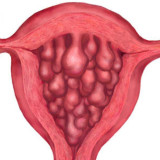Retention cyst is one of the cyst kinds that are classified according to their structure. Its peculiarity and main difference from so-called pseudocystsis that it is formed as a result of the mucus duct blockage. Given that all the walls are formed by the mucous membrane that contain the glands in large quantities, cysts can be multiple and on the any sinus walls.
While the second kind, which is a pseudocyst does not have a typical internal lining of the mucous membrane. It can be made of other types of tissues. Inflammatory fluid in cysts of this type is considered to accumulate due to inflammation of the upper jaw teeth. That is why pseudocyst cysts are located on the lower part of the maxillary sinus.
These two subspecies of the maxillary sinus cyst can be quite difficult to distinguish from each other in clinical and radiological picture. But this does not change the tactics of treatment.
Maxillary sinus retention cysts symptomatic
Maxillary sinus retention cysts symptomatic is almost the same as the other cysts kinds’ and express the same way.
Its manifestations, especially at the initial stages of development, are practically absent. That is why it is always difficult to separate complaints directly related to the cyst from complaints related to other pathologies of the nose and paranasal sinuses.
As usual, the disease is detected when the cyst reaches a significant size and accordingly clinical manifestations of maxillary retention sinus cysts symptomatic appear. Or it is detected accidentally, when doing skull bones radiography procedure for some other reasons.
However, there is a number of symptoms that allow to notice it:
- сonstant runny nose
- purulent fetid nose mucus
- pain in the projection of the maxillary sinus, especially when press or tilt
- headaches
- difficulty in nasal breathing
- smell loss
The doctor conducts the person’s examination and sends him to the x-ray screening. In addition, MRI or CT examination may be prescribed. To determine the nature of the cyst, they take a puncture of its content and send it to the histology.
Reasons and causes of a maxillary sinus retention cyst
Maxillary sinus retention cysts are most often the result of inflammatory changes in the mucous membranes. Often, their formation is due to chronic diseases. As there is no normal tissues regeneration and the excretory ducts patency of the mucous glands is not restored. Among the diseases are sinusitis, frontal sinusitis, etmoiditois and sphenoiditis of bacterial or allergic origin. The role of contributing factors is made by anomalies of the nasal cavity. They are foe example nasal septum curvature, hypoplasia of the nasal shells.
How to avoid maxillary cysts
Simple prevention measures help to avoid the appearance of the cysts:
Monitor the immunity system, try not to catch a cold. In cold weather abstain from swimming pools and sports activities in the fresh air.
Do not let a disease take its course. It is viral diseases that become the main cause of chronic sinusitis, and after them — the cyst. If there is anything similar to maxillary retention cysts symptomatic, the doctor should be visited.
Visit your dentist regularly. Sometimes inflammation from the roots of the teeth spreads to the sinuses.
After the treatment, the cyst can recur. To prevent relapse, regularly see an otolaryngologist. Find out what’s causing the problem.
And remember, any pathology should be treated by the doctor. Self-treatment, even natural, is ineffective and has serious consequences without the specialist control.












